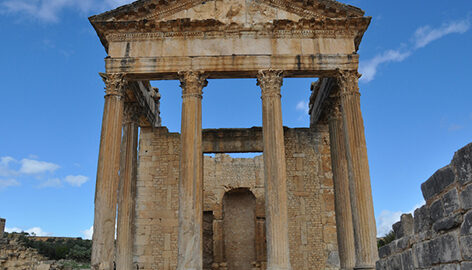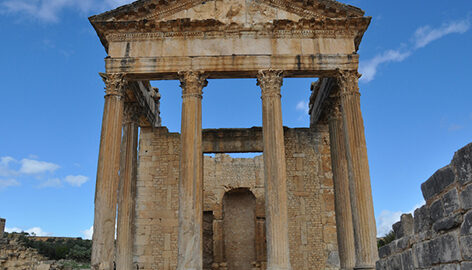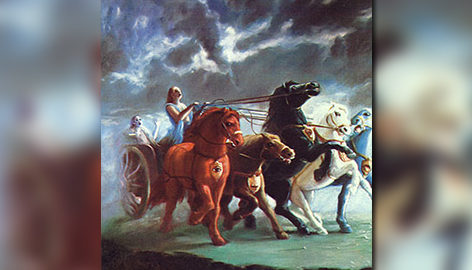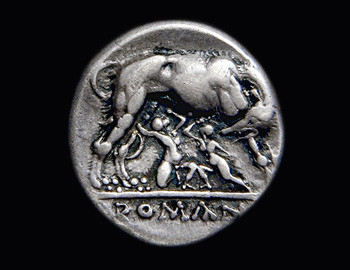

The architectural and monumental coin-type of the second century AD are of considerable interest and importance to student of the architecture and topography of ancient Rome. No fewer than forty-five building and monument. Although the material culture of the Roman Empire is replete with illustrations of built structures, for centuries scholarship on architectural depictions has focused almost exclusively on particular issues of topography and reconstruction, rarely moving beyond such questions as “which building is depicted?”, So old Roman imperial coins is the most helpful way to understand the structure and recreate it to preserve them. Continue reading Old Roman Imperial Coins depicting Monuments
The Mintage World Team comprises of experts, researchers and writers from the field of Philately, Notaphily and Numismatics who try to shed light on some of the most interesting aspects of coins, banknotes and stamps from not just India but across the globe as well.

The presentation of monuments and buildings on ancient Roman coins is one of the most famous subjects in the study of coin iconography. In addition to numismatists, it has attracted the attention of historians, art historians, archaeologists, and topographers. Through Roman Coinage, we can see the consistent evolution of Roman architecture. Coin depicting Roman architecture is the most soughed after ancient coins around the world. Continue reading Ancient Roman Coins Depicting Monuments
The Mintage World Team comprises of experts, researchers and writers from the field of Philately, Notaphily and Numismatics who try to shed light on some of the most interesting aspects of coins, banknotes and stamps from not just India but across the globe as well.

Deities were common deception on the reverse of the Roman coins. These were used if an emperor wished to be associated with attributes of the particular gods and goddess. More often gods were used rather than goddesses. For example, if the emperor wanted to appear peaceful he could depict ‘Minerva Pacifiera’ as the ‘Bringer of peace’. Furthermore, the deities were depicted by the Emperors so they can use the image to suggest the gods approved of and support their reign or associate themselves with the divine as Julius Caesar did with his depiction of Goddesses Venus Continue reading Divinity: Goddesses on the Roman coins II
The Mintage World Team comprises of experts, researchers and writers from the field of Philately, Notaphily and Numismatics who try to shed light on some of the most interesting aspects of coins, banknotes and stamps from not just India but across the globe as well.

The canons of the Roman Goddesses are quite famous and powerful as their male counterpart. The pantheons of these goddesses are often associated with their Greek equivalents and it is often distinguished through there attires and attributes. Continue reading Divinity: Goddesses on the Roman coins
The Mintage World Team comprises of experts, researchers and writers from the field of Philately, Notaphily and Numismatics who try to shed light on some of the most interesting aspects of coins, banknotes and stamps from not just India but across the globe as well.

Ancient civilizations used chariots for war, racing, processions, and travel. Its evidence is reflected through the coinage of the Roman civilization. On these ancient coins the chariots are illustrated being driven by emperors, important personages and even gods and goddesses. The chariots are usually pulled by the horse but in this coinage, we also get chariots pulled by serpents, elephants, bulls, etc. Continue reading Distinguished chariots on Roman Coins
The Mintage World Team comprises of experts, researchers and writers from the field of Philately, Notaphily and Numismatics who try to shed light on some of the most interesting aspects of coins, banknotes and stamps from not just India but across the globe as well.

Human art is the reflection of nature, it’s nothing but an imitation and absorption of its gist. The coins created by humans are nothing but the inclusion of this art in his daily life. But this artistic nature of men took time to develop in the monetary system. The uniform coinage which depicted various elements of nature, mainly animals, came later in the human history when the urbanisation was at the height of its progress. The best example of this embellishment is the animals on Roman coins; the illustrative depiction of fauna on their coins is a beautiful part of their numismatic history.
Continue reading The essence of animals on Roman coins: Phase I
The Mintage World Team comprises of experts, researchers and writers from the field of Philately, Notaphily and Numismatics who try to shed light on some of the most interesting aspects of coins, banknotes and stamps from not just India but across the globe as well.